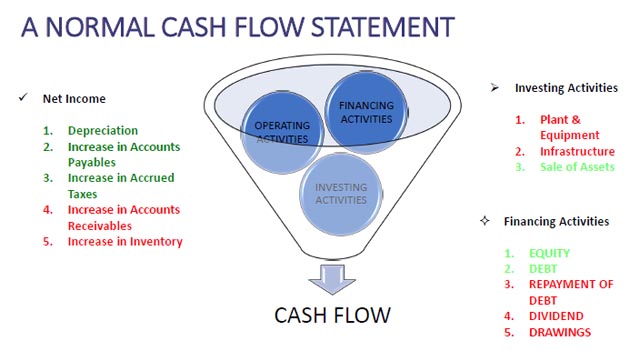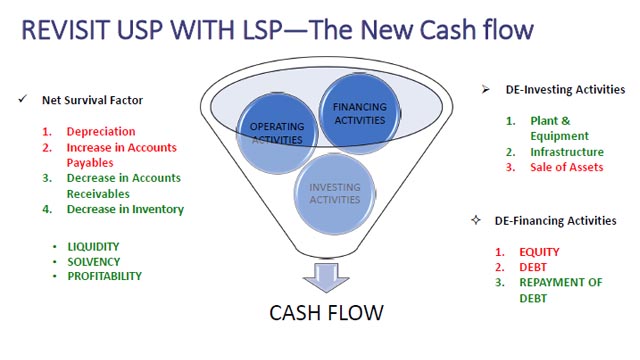

COVID-19 SME Forum
GlobalLinker and Wadhwani Advantage have together partnered with industry experts and leaders to help your business be better prepared

264 week ago — 9 min read
The world that we knew before COVID-19 hit us has ceased to exist. Disruptions in supply chains, distribution, ways of working have had many impacts. Let’s explore a few. We are witnessing a scenario of no demand and supply for most goods and services, save the essentials and healthcare.
Companies that have seen steady sales are now witnessing a time where the consumer's top priority is cash conservation.
A case in point is an organisation like Maruti Suzuki; never have they been in a situation of nil sales. This April, they booked zero sales! Faced with these challenges, companies have no alternative than to dip into their cash reserves.
We are now witnessing an unprecedented level of localised consumption, more so in the rural areas due to the sudden shift in population. This reverse migration has triggered the high possibility of resource crunch in urban areas versus surplus in rural areas, thus creating high volatility of income and cost of labour.
Businesses should regularly assess continuity, irrespective of crisis situations. This is a period of survival of the fittest and the quickest. Only those who are able to rightly assess the situation rapidly will be able to stay ahead of the curve.
This reverse migration of blue-collared resources is going to increase the cost of labour for businesses.
The euphoric business models built pre-COVID can be disrupted in this climate due to the many challenges of managing and raising funds.
Also read: Covid-19 Business Unusual: How should SMEs tackle it?
We would recommend that companies proactively take the following three steps to manage funds for survival:
We recommend that start with assessing the impact of COVID-19 on your business. This will ensure that you have not missed out of critical pieces of information. The business environment is changing very rapidly, hence, your plan must lend itself to dealing with these changes with agility. Some points that you must access are:
Once you have a clear understanding of the impact, ensure that your business continuity pan includes:
Businesses should regularly assess continuity, irrespective of crisis situations. This is a period of survival of the fittest and the quickest. Only those who are able to rightly assess the situation rapidly will be able to stay ahead of the curve.
While everyone is hopeful about a quick recovery, post the lockdown, we must prepare for an eventuality that may be different. Demand could continue to fluctuate until we are completely out of the COVID phase. It is prudent to take steps to mitigate any risks.
Businesses must keep in mind that lower cost of production may mean using competitive pricings to get back in the game.
While is makes business sense to increase flexibility by having multiple plans built using scenario analysis, it is also important for businesses to identify synergies and work towards the new normal.
Also read: Business continuity planning - 5 practical tips
Everyone, including the government, should be re-writing their business plan. The aggressive plans made pre-COVID will no longer be of use.
Keep the following points in mind while framing the budget for survival:

Consider the following points mind while framing the budget for sustenance:
Everyone, including the government, should be re-writing their business plan. The aggressive plans made pre-COVID will no longer be of use.
Refer to the earlier Maruti Suzuki example, where they made a sale of 86,000 crores in the last fiscal, and they are expected to fall short by at least 10% this year if they were to meet the same numbers. While they can reduce their expense with respect to their contract labourers; they would still have to bear the infrastructure, employee and marketing cost. They would also need to plan for 25% hair-cut of their current best-case to be prudent.
Cost of labour is expected to shoot up. With the V-shaped recovery, businesses will have to pay more. 85% of the truck drivers have returned to their home towns, some have been retained by paying 20-30% more.
It is important to grade and rate the debtors. It is equally important to negotiate on the payables.
Several large corporates give big contracts to the SMEs but with 90-180 payment days. Companies must check their financials from the MCA website and negotiate better terms with them.
With high liquidity, the interest rates are bound to drop. Government schemes may offer relief. The time is ripe to negotiate better rates with banks. In this environment banks are now going to depend on cash flow rather than collateral.
It is important to sell your inventory at a discount or even forego the profit and sell at cost to enable sales to fund part of the expenses.
During the financial crisis of 2008-09, banks had stopped lending. Some of them still exceeded the previous year’s profit by focusing on collections. Similarly, businesses can use bill discounting facilities to ensure collections.
Understand how long your cash reserves will last and if there is a working capital facility that can address the cash crunch.
As the going gets tough, expect investors to become tougher. Expect bankers and other investors to want a deeper understanding of the business cash-flow. The questions on debtors, creditors, inventory and non-productive investments are bound to be tougher.
Owners should critically evaluate their own performance w.r.t actual cash sales versus sales to understand risks in the business.
Cash Flow Statement is of utmost importance and needs to be prepared every month to gauge impact. We recommend that businesses concentrate on liquidity, solvency, and profitability. Liquidity will enable continuity; solvency will enhance trust and profitability will instill investor confidence. Now is not the time to make investments in plant and equipment or infrastructure.


Businesses need to remain highly focused on business continuity and getting their business plan right to remain solvent and move ahead of the curve. Being agile and responsive to this new normal will set the stage for tomorrow.
Also read: Managing cash flows during a period of crisis
We would love to hear from you!
Do reach out to us on this link or write to Ramakrishnan Venkateswaran if you have any questions or comments on the article.
Image source: shutterstock.com
To explore business opportunities, link with me by clicking on the 'Connect' button on my eBiz Card.
Disclaimer: The views and opinions expressed in this article are those of the author and do not necessarily reflect the views, official policy or position of GlobalLinker.
Posted by
Ramakrishnan VenkateswaranExpert Advisor and Consultant for SMEs on the platform, specially to address queries on the impact of COVID-19 on business owners in India With more than two decades of...


COVID-19 SME Forum
GlobalLinker and Wadhwani Advantage have together partnered with industry experts and leaders to help your business be better prepared
Most read this week
Comments
Share this content
Please login or Register to join the discussion